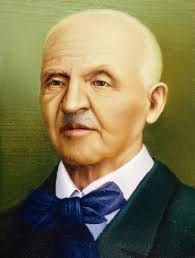Anton Bruckner’s Symphony No. 6 in A Major (WAB 106) stands as one of his most distinctive and original symphonic works. Composed between 1879 and 1881, this symphony showcases Bruckner’s unique voice during a crucial period of his artistic development. While it is perhaps not as frequently performed as some of his other symphonies, the Sixth reveals a master composer deeply immersed in architectural grandeur, spiritual depth, and harmonic innovation.
A Transitional Work in Bruckner’s Oeuvre
By the time Bruckner began composing the Sixth Symphony, he had already completed five numbered symphonies (not including the “Study” Symphony in F minor and the “No. 0” in D minor). These earlier works, particularly the Third, Fourth (“Romantic”), and Fifth Symphonies, had begun to define his monumental and deeply spiritual symphonic style.
The Sixth Symphony, however, marks something of a turning point. It retains the spiritual and monumental scope of its predecessors but also experiments with more lyrical and concise forms, creating a work that is both monumental and intimate.
Bruckner described the Sixth as his “boldest” symphony, and in many ways it is. It breaks away from some of the more overt Wagnerian influences seen in his earlier works and offers a tighter, more direct style while still maintaining the complex harmonic language for which he is known.
Composition and Structure
Bruckner composed the symphony between September 1879 and September 1881, during a relatively peaceful and productive period of his life. Unlike some of his other works, the Sixth was not subjected to major revisions after its completion. The four movements are:
- Majestoso – A dramatic and noble opening movement in sonata form, full of striking contrasts and thematic development.
- Adagio: Sehr feierlich – A slow, solemn movement with deep emotional resonance and lyrical beauty.
- Scherzo: Nicht schnell – Trio: Langsam – A dance-like scherzo with rustic charm, interrupted by a slower, more pastoral trio.
- Finale: Bewegt, doch nicht zu schnell – A robust and energetic conclusion that brings the symphony to a satisfying and powerful end.
The Sixth is notable for its rhythmic vitality, unusual harmonies, and tight thematic coherence. The first movement in particular is widely admired for its confident and majestic character, and the Adagio is one of Bruckner’s most moving slow movements.
The Challenge of Reception
Although completed in 1881, the Sixth Symphony did not receive a full performance during Bruckner’s lifetime. Only the middle two movements (Adagio and Scherzo) were performed in 1883 in Vienna under the baton of Wilhelm Jahn. The complete symphony had to wait until February 26, 1899—three years after Bruckner’s death—when it was conducted by Gustav Mahler, albeit in a heavily cut and altered version.
The first performance of the full, unaltered version took place only in 1935, conducted by Siegmund von Hausegger with the Munich Philharmonic. He played both Mahler’s altered version and Bruckner’s original in the same concert for comparison, which helped to restore appreciation for Bruckner’s intended score.
Legacy and Appreciation
Despite its challenging history, Symphony No. 6 has gained increasing recognition in the 20th and 21st centuries. It is now considered a unique and essential part of the Bruckner canon. Its lack of major revisions makes it a valuable insight into Bruckner’s pure compositional intent, unfiltered by later editorial interference.
Modern interpreters and orchestras have embraced the Sixth for its emotional immediacy, rich orchestration, and harmonic daring. Conductors such as Eugen Jochum, Herbert von Karajan, Bernard Haitink, and Christian Thielemann have all contributed to its resurgence through acclaimed recordings and performances.
Conclusion
Anton Bruckner’s Symphony No. 6 in A Major may not be as universally celebrated as his later symphonies, but it holds a special place in the composer’s symphonic journey. Bold, original, and emotionally compelling, it represents Bruckner’s efforts to refine his style and assert his unique musical vision. Today, it stands as a testament to the composer’s faith in his art, offering listeners a deeply rewarding and often awe-inspiring experience.


Comments are closed